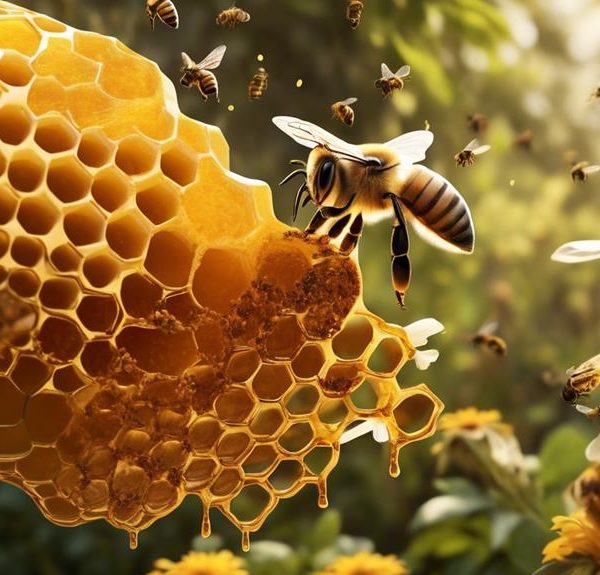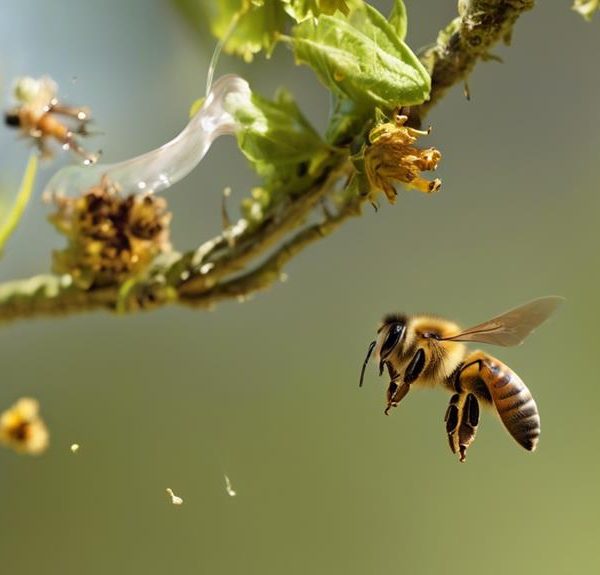Peek into the plight of Australia's honey bees, unveiling the threats they face and the vital role they play in our ecosystem.

Are Honey Bees Endangered in Australia
As the old saying goes, 'You catch more flies with honey than with vinegar.' But let's flip that adage around for a moment: what happens when the honey, or more specifically, the honey bees, are in peril?
You might be thinking, 'Surely not in Australia, a land known for its rich and diverse wildlife.' Well, you might want to reconsider. From disease to climate change, a multitude of threats are buzzing around our vital pollinators, potentially putting them, and the crucial role they play in our ecosystem and agriculture, at risk.
But just how serious is this risk, and what can be done about it? Stay with us, and let's explore this together.
Key Takeaways
- The Varroa mite and climate change pose significant threats to Australian honey bee populations.
- Diseases like American foulbrood and Nosema can decimate entire bee colonies, impacting honey production and pollination services.
- Climate change effects, such as extreme weather events and changes in flowering times, disrupt bees' foraging abilities and feeding patterns.
- Conservation efforts, including government strategies, research initiatives, and support for beekeepers, are crucial for the survival and well-being of Australian bees.
Understanding Australia's Honey Bee Population
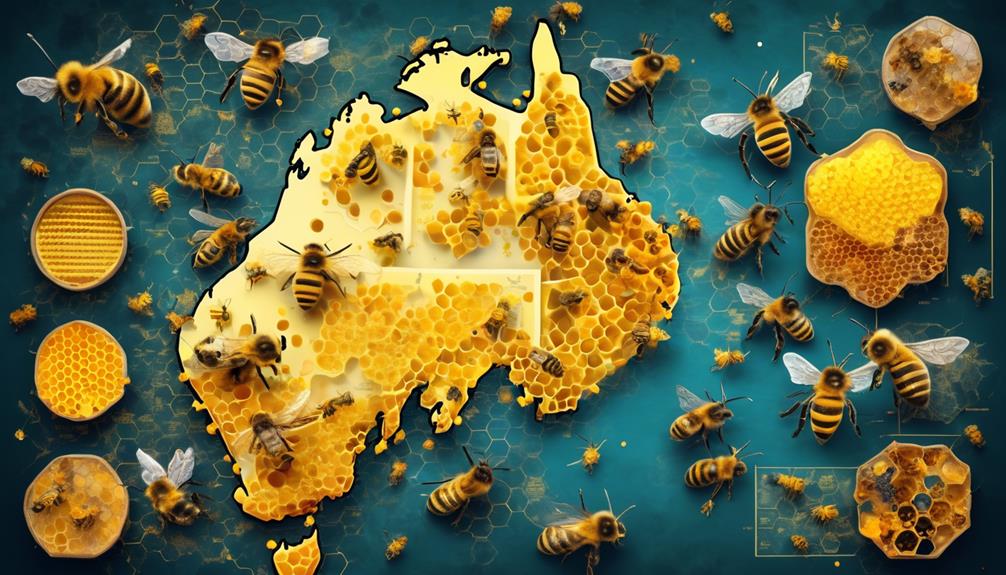
While you may believe that Australia's honey bee population is thriving, a deeper analysis reveals a more complex and concerning situation. You see, honey bees aren't native to Australia; they were introduced in the 19th century for honey production. Now, they're an integral part of the Australian ecosystem, pollinating around 65% of agricultural crops.
Yet, there's a growing concern. The Varroa mite, a parasite that's devastated bee populations globally, has yet to reach Australia. But it's only a matter of time. This mite weakens bees, making them more susceptible to viruses and diseases. Australia's bees won't have developed resistance to these mites, leading to potential catastrophic losses.
Further, climate change poses another threat. Rising temperatures and unpredictable weather patterns can disrupt bees' foraging behavior and the flowering times of plants they rely on. This can lead to a mismatch between when bees need food and when it's available.
In short, while Australia's honey bee population may appear robust, looming threats could radically change this. Understanding these challenges is the first step towards developing strategies to ensure their survival.
Major Threats to Australian Honey Bees
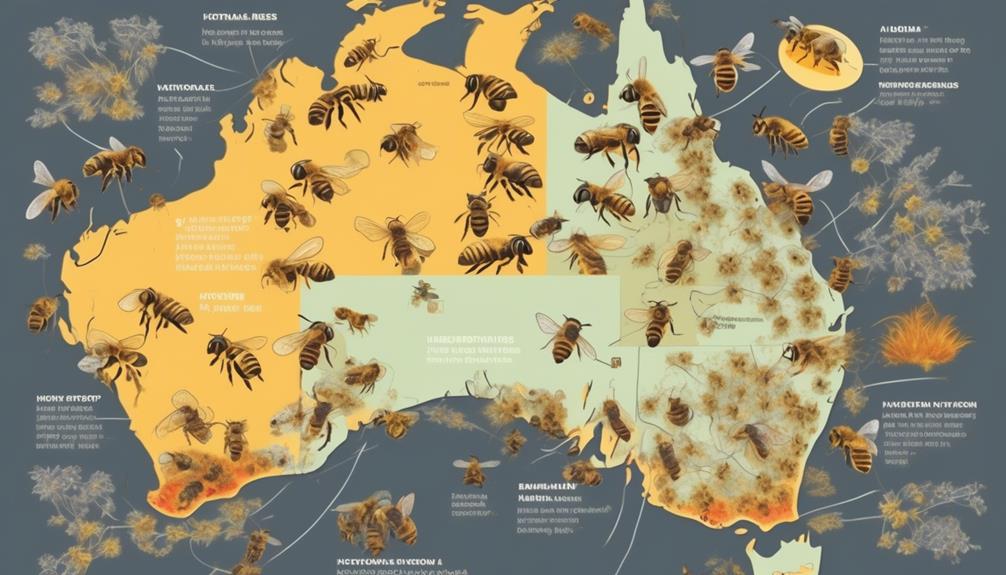
Given the crucial role they play in the ecosystem, understanding the major threats Australian honey bees face is of paramount importance. You'll find that these threats primarily comprise of climate change, disease, habitat loss, and the use of pesticides.
Major Threats | Description |
|---|---|
Climate Change | Rising temperatures and altered weather patterns disrupt bees' natural cycles, affecting their ability to forage and reproduce. |
Disease | Pathogens and parasites, such as the Varroa mite, pose significant health risks to bee colonies. |
Habitat Loss | Urban development and farming practices result in the loss of wildflowers and nesting sites. |
Pesticides | Chemicals used in agriculture can be lethal to bees and weaken their immune systems. |
Climate change, as you're likely aware, drastically affects bee populations by altering the timing of flower blooming, disrupting the critical synchrony between bees and the plants they pollinate. Diseases, particularly those caused by the Varroa mite, devastate colonies, leading to significant bee losses. Rapid urban development contributes to habitat loss, destroying essential resources bees rely on. Lastly, pesticides, which are often used without consideration of their lethal effects on bees, further exacerbate these threats. Addressing these issues is key to ensuring the survival of Australia's honey bees.
Impact of Diseases on Honey Bees
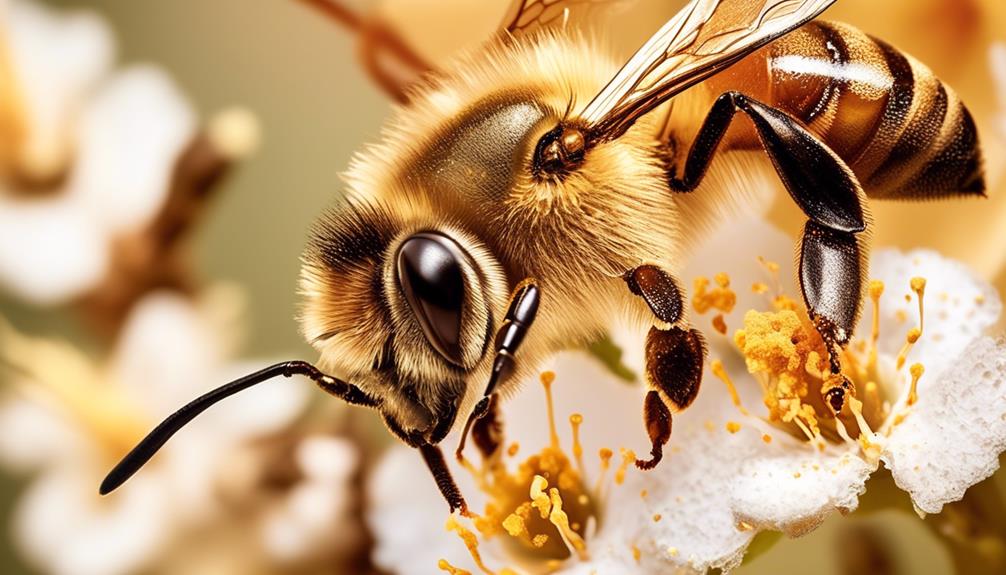
Despite their small size, honey bees face a large-scale problem with diseases, which can decimate entire colonies and significantly impact their survival in Australia. Predominant diseases include American foulbrood, European foulbrood, and Nosema, a debilitating gut parasite.
These diseases don't just kill individual bees; they can wipe out entire colonies, disrupting the complex social structures bees rely on for survival. You see, bees aren't solitary creatures. They live, work, and die as a collective, so when disease spreads, it's a catastrophe.
American foulbrood, a bacterial disease, causes larvae to decay, while European foulbrood affects bee broods, resulting in weak, discolored, and twisted larvae that eventually die. Nosema, on the other hand, affects adult bees, making them unable to absorb nutrients, leading to severe weight loss and death.
These diseases impact honey production, as well as the pollination services bees provide. The knock-on effects are profound: reduced crop yields and biodiversity loss. Researchers are striving to develop disease-resistant bees and effective treatments but the task isn't easy. You need to understand that bees are vital for our ecosystem and food production. Protecting them isn't just about saving a species; it's about securing our future too.
Climate Change and Honey Bees

In addition to the threat of diseases, another significant challenge honey bees face in Australia is the escalating impact of climate change. You see, climate change isn't just about warmer temperatures. It's also about the increasing frequency and intensity of extreme weather events. In Australia, these often take the form of wildfires, floods, and heatwaves, all of which can decimate bee populations.
Research shows that heat stress can cause bees to become disoriented and unable to return to their hives. It also affects their ability to forage for nectar and pollen, vital food sources for the hive. These weather extremes aren't just a one-time event. They're happening more frequently and with greater intensity. That's a double whammy for our bees.
But it's not just the weather. Climate change affects plants, too. Changes in flowering times and the availability of certain plants can result in a mismatch between when bees are active and when their food sources are available. This disrupts the bees' feeding patterns and can lead to nutritional stress.
Conservation Efforts for Australia's Bees
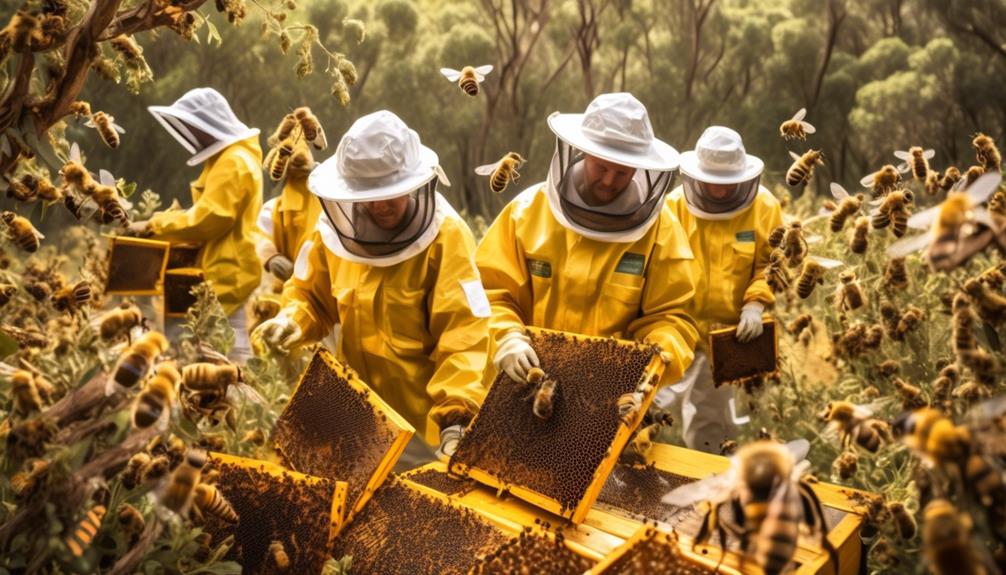
To counter these significant threats to Australia's honey bees, numerous conservation efforts are being implemented, aiming to bolster bee populations and protect their habitats. You'll find that these initiatives range from governmental regulations to community-driven projects. For instance, the Australian government's National Pollinator Strategy is designed to improve the resilience of pollinator populations, including honey bees, through research initiatives, habitat restoration, and public education.
In addition, organizations like the Wheen Bee Foundation work tirelessly to raise awareness about bee conservation. They're conducting critical research, advocating for bee-friendly policies, and educating the public on the importance of bees to our ecosystem and food security.
It's also worth noting the role of beekeepers in conservation. Their meticulous management of hives helps maintain healthy bee populations. They're not just protecting their livelihood; they're playing a vital role in ensuring the continuation of these incredible pollinators.
While these efforts are commendable, it's clear that maintaining healthy bee populations in Australia is a complex task requiring concerted action from all sectors of society. You can play your part too: by planting bee-friendly flora in your garden, reducing pesticide use, and supporting local beekeepers. Your actions can contribute to the larger conservation effort.
Conclusion
You've seen how Australia's honey bees face daunting challenges, from diseases to climate change. These threats put them at risk, and their declining numbers suggest they could be endangered.
However, dedicated conservation efforts offer a glimmer of hope. By understanding and addressing these issues, you can help safeguard these vital pollinators for future generations.
Remember, every action counts in the fight to protect Australia's honey bees.

